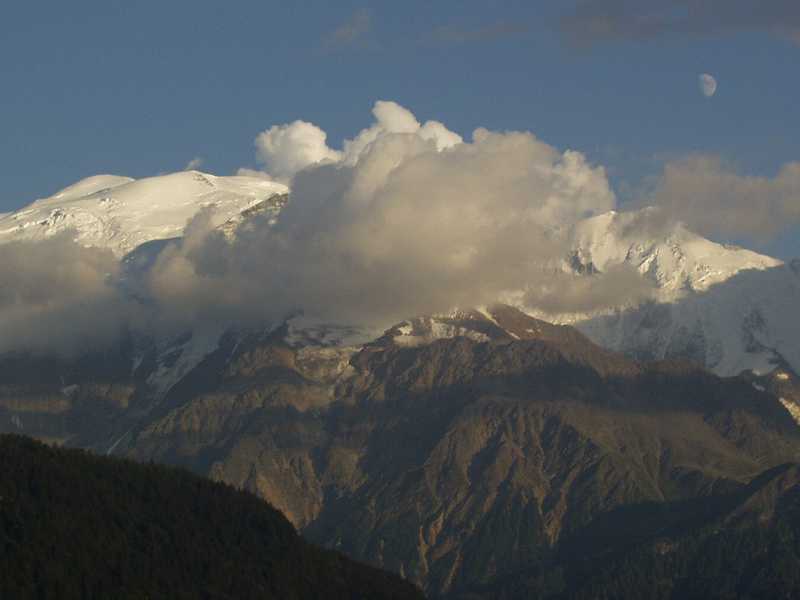|
Glacial Aretes
Ar๊tes and Pyramidal Peaks in
highland areas are glaciers features usually created by erosion, not
deposition. Features such as corries, ribbon lakes, U shaped valleys and
hanging valleys are typical of upland areas such as the Alps in Europe, the
English Lake District and the Southern Alps in New Zealand. When a corrie is
formed, its back and side walls tend to be steep and jagged, perhaps almost
vertical. When two corries form next to each other, and their adjacent walls
are eroded backwards until they meet, a narrow and pointed rock ridge is
formed. This is often likened to a knife edge, with near vertical sides and
a sharp top edge. This feature is called an arete.
Pyramidal Peaks
When three or more corries erode backwards and meet they cannot form an
arete; it has steep sides but doesn't have the length to make a ridge.
Imagine three corries at the corners of a triangle, eventually all eroding
back and meeting in the middle. A sharp pointed pyramid shape is created.
This is called a Pyramidal Peak, or Horn, and is a common shape for mountain
tops in well glaciated areas.
This ar๊te is in the Chamonix Valley,
France near Mont Blanc Cirques are created when glaciers erode backwards
into mountainsides, creating rounded hollows shaped like a shallow bowls.
Aretes are jagged, narrow ridges created where the back walls of two cirque
glaciers meet, eroding the ridge on both sides. Horns, such as the famous
Matterhorn in Switzerland, are created when several cirque glaciers erode a
mountain until all that is left is a steep, pointed peak with sharp,
ridge-like aretes leading up to the top.
Glacial terms
Firn (N้v้) snow that accumulates to form ice
Nunataks Exposed summits in Ice sheets
Supraglacial debris - Eroded material on top of the glacier
Englacial debris - Eroded material in the middle of the glacier
Subglacial debris - Eroded material underneath the glacier
Frost Shattering Freeze thaw material that falls onto the glacier
Abraision (striations) Erosion of the valley floor by subglacial
debris
Plucking Glacier freezes onto loose rock and plucks it away when it
moves
Bergschrund the Crevasse at the head of the glacier in which melt
water collects
Rotational movement the erosion effect that causes Cirques
Ar๊tes formed by 2 adjacent cirques eroding backwards
Pyramidal
Peaks
formed by 3 or more adjacent cirques eroding backwards
Glacial Troughs flat valley floors
Ribbon lakes in glacial troughs
Truncated Spurs Ridges cut short by glaciers
Hanging valleys - Valleys cut by glaciers with waterfalls
Roche Moutonnee Resistant rock smooth one side with plucked crags
downstream
Rock Drumlins - Resistant rock smooth both sides Whalebacks
Till Drumlins Glacial till and debris in groups broad upstream long
and thin down
Terminal Moraines Glacial debris dumped at the end of a glacial
Lateral Moraines Glacial debris dumped at the side of a glacial
Medial Moraines Glacial debris from two lateral moraines when
glaciers meet
Kettle
Lakes
Depressions caused by large ice lump that then melted
Eskers lines of subglacial meltwater streams deposited debris
|
![]()
![]() (Website
design by Craig Moore, London, England)
(Website
design by Craig Moore, London, England)
